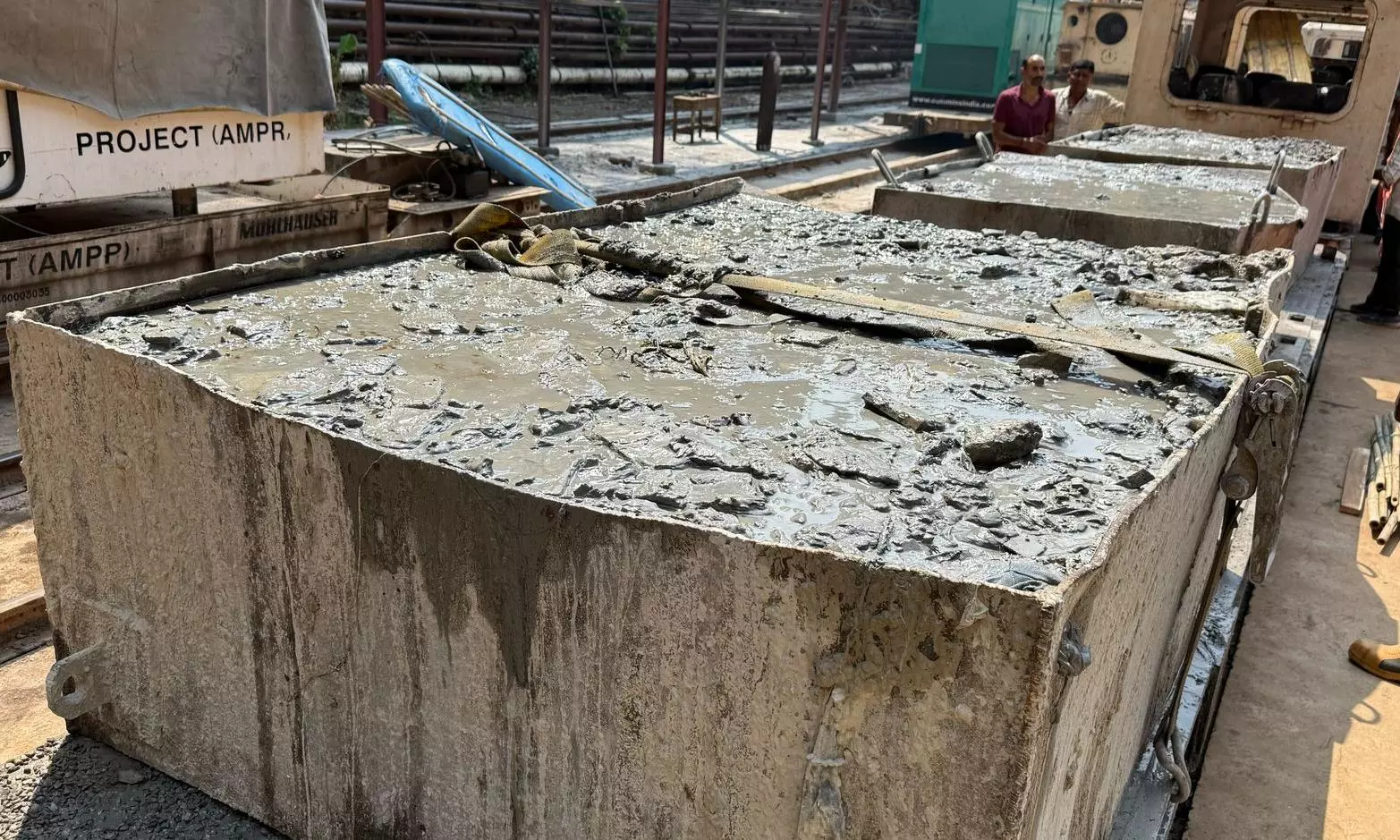Silt removal begins in SLBC tunnel
Ground penetrating radar put to work, may help locate missing persons

Hyderabad: Rescue work in the collapsed SLBC inlet tunnel on Thursday moved one step ahead, but that came with practically backbreaking work for the rescuers, and heat generated from the cutting of mangled steel of the tunnel boring machine parts that got thrown aside when the collapse happened on February 17.
With continuing worries over how the accumulated silt and stones – estimated to be anywhere between 5,000 and 10,000 cubic metres – might behave if removed in large quantities and speedily, workers took to loading huge steel bins taken inside the tunnel on a locomotive trolley, one shovelful of silt at a time.
By afternoon, the first load of silt in three bins made its way out, even as engineers tasked with dewatering the tunnel reached a significant milestone pumping out more water than that was seeping, or rather flowing, into the tunnel. “The dewatering has been completed and silt removal is being taken up round the clock in three shifts,” special chief secretary Arvind Kumar, the government’s point person for the rescue operations, said.
With hopes of finding any of the eight missing workers alive, the focus of the operations began shifting towards find the bodies. And officials hope that a ground penetrating radar taken to the site by NGRI scientists, may help in locating where the bodies may have been buried in the collapsed section of the tunnel. Officials said the NGRI team was in the tunnel since afternoon and once it completes taking all the required readings, and translates it into images to analyse the findings after coming out, the chances of devising a strategy to extract the bodies will improve.
Irrigation minister N. Uttam Kumar Reddy, who was on site, said the multi-agency rescue operation is in full swing with the country’s best experts and advanced equipment deployed to save the trapped workers.
The minister assured that the rescue and relief operations will be completed within two to three days, and the tunnel works will resume in two to three months. He said incident was one of the most complicated and complex tunnel accidents in Indian history, adding that it is for the first time that so many national and international agencies have been brought together under a unified command for a rescue mission.
Meanwhile, the South Central Railway sent its metal cutting team equipped with heavy duty equipment including an ultrathermic cutting unit which can produce heat in excess of 5,500 degrees Celsius that can melt and cut through almost any material. This is expected to help in cutting through thick sections of the TBM parts and huge steel mangled sections near the tunnel boring machine. One more of such units has been requisitioned, officials supervising the operations said.
